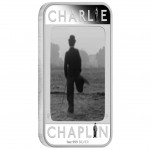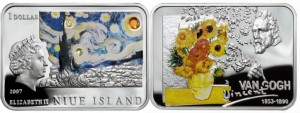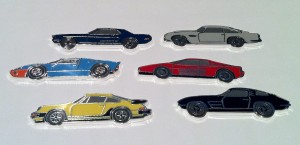BREAKING NEWS (Corrected): ANA VOTES TO CANCEL NATIONAL MONEY SHOW
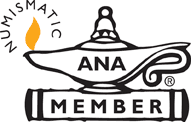 In a meeting this afternoon, the American Numismatic Association Board of Governors voted to cancel the National Money Show that was to be held in Phoenix, Arizona.
In a meeting this afternoon, the American Numismatic Association Board of Governors voted to cancel the National Money Show that was to be held in Phoenix, Arizona.
The vote was 7-2 with President Steve Ellsworth and Governor Mary Lynn Garrett voting against the measure.
The ANA has not made an official announcement pending discussions with the Phoenix Convention Center. The Board discussed the potential to schedule a future show in Phoenix.
This is breaking news. More to come…
Weekend change
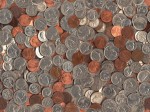 President’s Day is supposed to be the day that we celebrate the lives of the Presidents of the United States (POTUS). It became a holiday in 1968 when congress passed the Unified Monday Holiday Act (Public Law 90-363, S.cornell.edu/uscode/text/5/6103″ title=”5 U.S.C. 6103(a)” target=”_blank”>5 U.S.C. § 6103(a)) to standardize holidays on Mondays. Prior, most of the country celebrated February 22, George Washington’s birthday, as a holiday while some but not all states celebrated Abraham Lincoln’s birthday on February 12. The law made the third Monday in February the holiday.
President’s Day is supposed to be the day that we celebrate the lives of the Presidents of the United States (POTUS). It became a holiday in 1968 when congress passed the Unified Monday Holiday Act (Public Law 90-363, S.cornell.edu/uscode/text/5/6103″ title=”5 U.S.C. 6103(a)” target=”_blank”>5 U.S.C. § 6103(a)) to standardize holidays on Mondays. Prior, most of the country celebrated February 22, George Washington’s birthday, as a holiday while some but not all states celebrated Abraham Lincoln’s birthday on February 12. The law made the third Monday in February the holiday.
There are few traditions for the holiday except for sales by various retailers. Prior to the 1980s, many stores closed on George Washington’s Birthday. But amongst the first retailers to introduce George Washington’s Birthday sales were the automobile dealers. This was a time that the automobile manufacturers were going through a transition to more fuel efficient cars. Style was an issue since many began to look “boxy.” Seeing the success of increased sales, other stores followed and it has become rare to see a store closed on Presidents’ Day.
Even with the Winter Olympic Games in progress, just going out for usual errands required patience as many people chose to partake in the usual weekend sport of shopping. Rather than get worked up, I decided that I would see what I could find in my change by paying using cash.
I set out on Saturday and Sunday emptying my pocket of change along with my plans for the day. A stop at the gas station, where I admit to paying with a credit card, a proper beverage for the day (tall, 3-shot, extra hot, skim latte), and a stop at the bank for cash, I went on my way.
After two days of paying in cash, I counted my change. While collecting almost $18 in coins, I was surprised to find nothing remarkable. There were a few copper (pre-1982) Lincoln Memorial cents, but nothing that would give this post an interesting climax.
However, there was on interesting omission: no 2014 coins. In the half-dozen shiny, very red cents I found, all were 2013 cents except for one dated 2012. Those very shiny nickels were almost all dated 2013-D and there were no dimes newer than 2011. Similarly, the only of the National Parks quarters I found was a 2013 Fort McHenry quarter.
I also found three very shiny 2009-D Guam quarters and a mix of other circulated state quarters along with two pre-1999 quarters with the eagle reverse.
Under the guise of “A penny saved is a penny earned,” the entire lot was put into a container that sits on top of my dresser. When the container is full or in December, whichever comes first, I will bring the coins to a bank’s coin counter and donate the money to a worthy cause making the weekend’s activity worth something.
Why do colored coins bother me?
Whenever I comment on using design elements on coins that do not involve engraving I am reminded that one person’s gimmick is another’s innovation. I am also reminded that I have demonstrated a bit of hypocrisy by purchasing some of these coins for my collection including celebrating the innovation of one of these coins. So why do I have a near visceral reaction to the introduction of a coin whose purpose is to commemorate with a non-engraved design elements?
The question came to mind after the Perth Mint introduced the “Charlie Chaplin – 100 Years of Laughter 2014 1oz Silver Proof Lenticular Coin.” The coin is issued by the Pacific island nation of Tuvalu to honor the 100th anniversary of Charlie Chapin’s first movie appearance as The Tramp. The ingot-shaped coin features the Ian Rank-Broadley designed portrait of Queen Elizabeth II on the obverse and an image of Chaplin on the reverse.The reverse does not use just any image. It is the iconic image of the waddling tramp walking away from the camera. Like the image on the screen, this is a moving image. Using lenticular technology, the image will shift as you move the coin making it appear that Chaplin is walking.
Chaplin was the nascent movie industry’s first megastar. Although Mary Pickford and Douglas Fairbanks were the most recognizable of the time, Chaplin was the first actor whose movies were considered a success because he was involved with them. And while there were posters and booklets printed about other stars, Chaplin was the first to be fully merchandised around the world including a Chaplin doll that is one of the most prized toy and movie memorabilia collectibles today.
Even though Chaplin was the phenomenon of this time and I consider myself a fan, I am having a difficult time liking this coin.
In fact, I downright hate it!
I cannot explain why I hate this coin because I am interested in the Niue 2007 Van Gogh silver coin and the Andorra 2008 Renoir 10 Diners silver coin. All three coins are colored coins and ingot shaped, but the Chaplin coin really bothers me.
Although I did not like the Monnaie de Paris 2012 Yves Klein commemorative coin with the blue hand, I did not have this type of reaction. However, I still like the 2006 Canadian Breast Cancer commemorative and circulating quarter with enameled features.
One of the differences between the colored coins that I like versus those that I do not are the ones I like do have some engraving involved. And even though I do not like the Yves Klein commemorative, I do not find it as objectionable because the blue hand is an enhancement and not the entire design on the coin.
Not counting the Somalia motorcycle and sports car coins, I seem to have this response where the coloring or design gimmick encompasses the entire design of the coin. Once the coloring or other design elements that are not engraved go beyond enhancements and are used to create the design is when I begin to object.
It could also be the subject matter. As a resurgent gear-head with an eye toward the classics, the Somalia classic motorcycles and sports car coins appeal to me while the coins with colored birds and flowers do not. As the surviving spouse of a cancer victim, I supported the use of coins to raise money for cancer research by the Royal Canadian Mint, but none of the current hologram coins would interest me if they did not have the holograms.
Color and other enhancements on coins are here to stay. If there were not a market for them then the various mints would not produce these types of coins. It may be something that will attract more collectors and grow the hobby, which is good.
Maybe I should think about these enhancements like I think about cars: I want a car that drives and feels like a car and a coin that is engraved art; I do not want to drive a computer nor a coin that seems gimmicky.
- Image of the 2014 Charlie Chaplin 1-ounce lenticular silver coin courtesy of the Perth Mint.
- Images of the Van Gogh and Renoir coins courtesy of Talisman Coins.
POLL: A Kennedy half-dollar tribute
Last week, when the U.S. Mint announced a meeting of the Citizens Coinage Advisory Committee will be held on February 11, they included an agenda item mentioning a discussion regarding a 24-karat gold Kennedy half-dollar special product for 2014.
No further information is available from the U.S. Mint prior to the CCAC meeting.
 Shortly after Kennedy’s, U.S. Mint Director Eva Adams and Chief Engraver Gilroy Roberts reported that there was discussions about putting Kennedy’s portrait on a silver coin. Since Jacqueline Kennedy did not want to replace Washington’s portrait on the quarter, it was decided to use the half-dollar. Roberts used models from the inaugural medal for the obverse design and Assistant Engraver Frank Gasparro prepared the reverse design using the Presidential Seal.
Shortly after Kennedy’s, U.S. Mint Director Eva Adams and Chief Engraver Gilroy Roberts reported that there was discussions about putting Kennedy’s portrait on a silver coin. Since Jacqueline Kennedy did not want to replace Washington’s portrait on the quarter, it was decided to use the half-dollar. Roberts used models from the inaugural medal for the obverse design and Assistant Engraver Frank Gasparro prepared the reverse design using the Presidential Seal.
Since the law stated that coinage design could not be changed more often than 25 years, and that the Franklin Half was only 15 years old, it required Congress to authorize the change. The Act of December 30, 1963 allowed the design to be changed.
When the coin was released in 1964, the 90-percent silver coin was saved by a grieving nation wanting something that represented the fallen President. Over 273 million coins were struck in Philadelphia and 156 million in Denver.
This year, the Kennedy half-dollar will celebrate its 50th anniversary. It appears that as part of that anniversary, the U.S. Mint will use the authorization it has to strike 24-karat gold Buffalo coins and use it to create a Kennedy half-dollar tribute.
Today’s poll asks if you like the idea of a gold tribute coin and whether you would buy one?
What do you think about the idea that the U.S. Mint will produce a 24-karat gold tribute to the 50th anniversary of the Kennedy half-dollar?
Total Voters: 70
A frank discussion about China and counterfeits
A persistent question that follows stories about counterfeiting is why do most of the counterfeits come from China and why do they get away with doing this? Unfortunately, the answer lies in differences in our laws, politics, and cultures that may not be as easily resolved as people would like. However, understanding the issues may make it easier to understand how to resolve the problems.
The easiest part of the explanation is the legal standpoint of what we see as counterfeiting versus what the Chinese legal system sees as ordinary commerce. In the United States, every coin ever minted is still legal tender and legally an instrument of the government. Although the Trade dollar was demonetized in 1876, it was remonetized as part of the Coinage Act of 1965 making it legal tender (31 U.S.C. § 5103) for trade in the United States. Even when the United States changes the design of a coin, it remains legal tender.
To protect its currency, the United States has anti-counterfeiting laws that say it is illegal to counterfeit the nation’s money and use in commerce. To protect the collection of collectible coins and currency, the United States created the Hobby Protection Act (15 U.S.C. § 2101 et. seq.) to protect the money supply when it is a collectible and not an instrument of commerce.
In the United States, laws a cumulative. Once passed, they remain the law until repealed or declared unconstitutional by the courts. This is not the way in many other countries. When a new government takes power they are given the authority to rewrite the laws in some form. Not only does this happen with authoritarian governments but in most parliamentary democracies. While new parliamentary governments have restrictions on the changes they make, authoritarian governments do not.
The People’s Republic of China has been run by the Communist Party since 1949. Their rules and laws were changed with the rise of Chairman Mao Zedong and get altered by the party every time a new chairman takes over the party. This includes the control over the money supply. Thus, when the Communist Party took over the country, they demonetized the money produced by the Republic of China and issued renminbi, the “people’s currency.”
In real terms, all coins struck since 1955, the first issued under the current government, are legal tender. Currency printed since 1999, the fifth series are the only legal tender notes. Any other coin or currency note has been demonetized.
Under Chinese anti-counterfeiting laws, it is illegal to duplicate any legal tender coin or currency note for any reason. However, since coinage from previous regimes is no longer legal tender, it is legal strike coins with designs that are no longer legal tender. Chinese laws do not recognize the collection of these coins as a market to protect. Coins are an instrument to facilitate commerce.
Buying and selling coins as an object is just a matter of commerce between individuals under Chinese law and not something that requires protection. While the Chinese buyer can use the obsolete coin as an object of barter, bartering does not hold the same legal status as paying with legal tender currency. Basically, once it is demonetized for new coinage, just about anything goes.
Unlike United States law Chinese law does not recognize the perpetual legal tender status of every coin issued. Chinese law also recognizes that counterfeiting current issues of other countries is also illegal because someone could try to use the coin in commerce where it is legal to use foreign currency. This means that in China, it would be illegal to reproduce a presidential dollar or Washington quarter, but producing Morgan dollars or a set of 1921 Walking Liberty half-dollars is legal in China because these are coins no longer issued in the United States.
When China is asked to assist the United States to stop the counterfeiting of coins, China does not recognize that its people are doing anything wrong. The coins are no longer being made, they are not in circulation, and their laws allow people to make copies of these coins. China does not recognize a collectible coin market. In fact, the only laws they have regarding collectibles are laws protecting antiquities and cultural properties. Under Chinese law, you cannot duplicate the proverbial Ming Dynasty vase and try to pass it off as real but it is legal to reproduce a Rembrandt masterpiece since he is not Chinese and his work was not made in China.
A trade attorney that was consulted for this article confirmed that when it comes to these issues, Chinese law is very protectionist. The claim is that they follow their laws consistently regardless of outside circumstances and they refuse to make exceptions citing the complication with enforcing their laws in a country with a population of more than 1.3 billion people.
Making the problem more difficult, copying and counterfeiting of grading service holders is not covered by Chinese law because they are not government entities. The grading services would have to fight the counterfeiters using Chinese patent and copyright law. A patent attorney confirmed that not only would this not stop the problem, but foreign challenges to alleged patent and copyright violations are rarely successful in Chinese courts.
The Chinese government has no incentive to help the United States or any other country fight counterfeiting in what is perceived by the Chinese as a small market problem. To put the resources necessary into what looks like a petty crime for selling inexpensive, non-circulating duplicate coins that are within Chinese law to manufacture is not worth their resources.
While there is anecdotal evidence that the Chinese government knows about the counterfeit trades and some officials informally support the efforts because they get kickbacks, official Chinese policy denies everything.
A lot has been written about the nature of the relationship between the United States and China since President Richard Nixon’s trip to China in 1972. Neither side trusts each other nor does neither side believe each other. Today, the United States decries the Chinese for buying too much of our debt, allegations of spying, industrial espionage, and cybercrimes. The Chinese say that the United States is trying to bully the world and that these naysayers are making up the stories to scare the world into following them. The United States talks about civil rights violations within Chinese border and the Chinese government tells the United States to mind its own business.
The greater opening of markets between the country and the increase in popularity of bullion coins has made the Chinese Panda a popular coin amongst collectors and investors. Those of us who buy these coins know that even with the production increases since 2010 new issues continue to command a premium greater than other bullion coins.
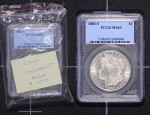
PCGS representatives showed Congressmen counterfeit U.S. coins in counterfeit PCGS holders during their recent meetings in Washington, DC. (Photo courtesy of PCGS.)
These are the values of the Chinese government. Whether you agree with them or not, Communist Party officials will resent anyone telling them how to manage their domestic affairs. They want advice about how to treat their citizens as much as the United States wants similar advice from China.
All things considered, there is no incentive for China to stop the manufacture of counterfeit collectable coins.
It is not against Chinese law for these people to manufacture coins that are no longer in production. Chinese people who are manufacturing these coins are working in China and many employ other people. It means there are fewer people on what little government assistance the Chinese government provides and they can collect taxes on the incomes.
When a United States trade representatives negotiate with their Chinese counterparts, it gives the Chinese a chance to lecture the United States how they resolved the counterfeiting issues which leads to a discussion on currency handling and management, which is a sore subject in the United States since the United States questions Chinese monetary policies.
Finally, it gives China a measure of moral superiority against the United States. After all, China figured out a way to prevent the impact of counterfeiting of older currency, why can’t the United States do the same?
China has no incentive to help the United States to solve a problem that they perceive does not exist. It is up to the United States to resolve these issues. This is why the industry needs the Collectible Coin Protection Act (H.R. 2754) to allow law enforcement to cut off the supply lines from the counterfeit manufacturers in the United States.
Counterfeiting: Numismatic’s virus
Of all the threats to the numismatics industry one stands out as being the biggest threat: counterfeiting. While thefts and violence of dealers are tragedies, the theft is more localized and easier to deal with because, for the most part, criminals are stupid and leave evidence. Also, since the dealer community is small and there is cooperation from the pawn industry, there is a higher resolution from thefts than expected.
Counterfeiting is worse. Counterfeiting can be a systemic problem that infects the industry in the same way a virus infects your body. To extend the analogy, thefts would be like breaking a finger. It will hurt and cause problems, but the rest of the body will survive. A virus hurts the entire body.
A counterfeit coin is added to the market and is sold to an unsuspecting buyer. The buyer figures out that the coin is counterfeit and is usually embarrassed to admit their mistake. Rather than report the crime or just chalk it up to bad luck, they try to resell the coin, even at a loss, to make up some of the money. The buyer, who is now the reseller, can plead ignorance by claiming buyer’s remorse and say that they decided they did not want the coin.
Overseas counterfeiters, mostly from China, also setup broker networks where they sell their creations to United States-based sellers for them to sell to unsuspecting buyers. While many use online sources to sell these counterfeits, many will try to sell them to low-end coin shops, bullion traders like the ones who setup in hotel rooms, and pawn shops. Unfortunately, they are successful in selling of these items to what should be trusted dealers keeping them in hobby circulation like a virus coursing through your veins.
The problem is not limited to raw coins. Counterfeiters have figured out ways to counterfeiting both the NGC and PCGS holders along with their holographs and seals in order to fool potential customers. Since both companies make it easy to look up serial numbers via their websites, counterfeiters will use the serial number of a real coin and counterfeit that coin for the holder. Both NGC and PCGS have been doing as much as technology allows when upgrading their holders and holographic seals to thwart counterfeiters.
A reminder of the issue landed in Inboxes today from Doug Davis of the Numismatic Crime Information Center. Rather than describe the warning, here it is in its entirety:
COUNTERFEIT SUSPECT
Dealers in Illinois, Missouri, Oklahoma and Kansas should be on the look out for a suspect selling counterfeit coins and bullion within the last ten days. The suspect has been identified as Gabe Owen and sometimes uses the alias Garet or Gabriel Owen. Owen is a white male and uses a Kansas driver’s license or a passport as identification. The vehicle driven by Owen is a white Yukon or Tahoe.
Owen is attempting to sell gold bars, one ounce gold eagles, a 1795 PCGS VF dollar and silver eagles. The same suspect was identified in similar incidents and reported by NCIC approximately one year ago.
We are working with authorities to get a current photo. At the present time there is no outstanding warrant for this subject.
A basic tool against counterfeiting is education. You should know and understand what you are buying. While this sounds basic, you have to think about the coins you are purchasing. For example, collectors of Morgan dollars might think they know what the coin looks like and what to look for, but do you really know? Could that variation in the strike be a known variety, known as VAMs after ground breaking research into Morgan dollar die varieties by Leroy C. Van Allen and A. George Mallis? What if it is a real Morgan dollar that was once cleaned or tooled that would be at least worth its value in silver?
Even if you do not have the education give a definitive answer, how many times have you heard the target of a scam say that something did not seem right or that they questioned a lot of what the seller was saying? More times than not, these instincts are usually right and the few times they are not right, you should feel better knowing that at least you had the sense to listen to that inner voice because you might need it next time.
Always remember, if the deal is too good to be true, it probably is not a good deal!
While counterfeiting is illegal and there are protections under the Hobby Protection Act, the only person that can be prosecuted is the seller. Under the law, the only other person who could be prosecuted is the manufacturer. In most cases, the manufacturer is outside of the United States and beyond the reach of law enforcement.
One tool that can help is H.R. 2754, the Collectible Coin Protection Act. The Collectible Coin Protection Act updates the Hobby Protection Act by allowing law enforcement to target the distributors as well as the sellers. By making the changes H.R. 2754 prescribes, it allows law enforcement to cut off the supply lines from the counterfeit manufacturers.
H.R. 2754 passed the House of Representatives on July 30, 2013 and was sent to Senate for their consideration. However, the bill is sitting in the Senate Commerce, Science, and Transportation waiting to be scheduled. Even if your senators are not a member of this committee, if they hear from constituents that this is a concern, they will speak with the committee chairman Sen. Jay Rockefeller (D-WV) or the ranking member Sen. John Thune (R-SD) to bring this to a vote.
Be part of the antidote to this virus and go to senate.gov, use the pull down menu in the upper-right corner of the page to select the state you live or work. Please contact both of your senators and let them know that you support the Collectible Coin Protection Act. When you contact your senators, tell them that the bill is revenue neutral. It will not add to the deficit and will not require additional appropriations.
In the meantime, please be careful and educate yourself before making that purchase. Buy the book before you buy the coin may be more important now than ever.
The advantage is that almost any book at almost any price is a bargain. You cannot buy them much cheaper. The profits come from knowing what is between the covers. The best collections are built on knowledge, not price sheets.
I could not have said it better!
Image of counterfeit coin and slab was taken by the author at the 2014 F.U.N. Show.
